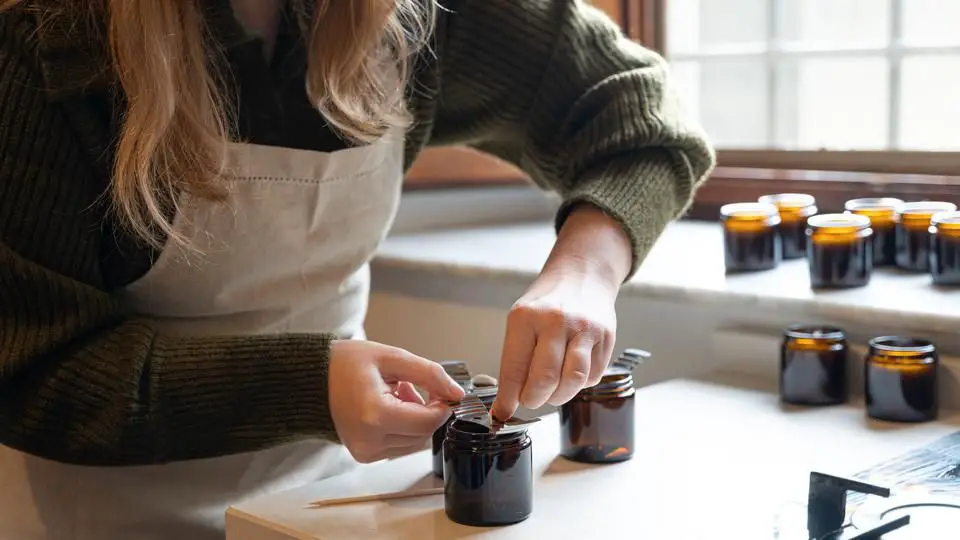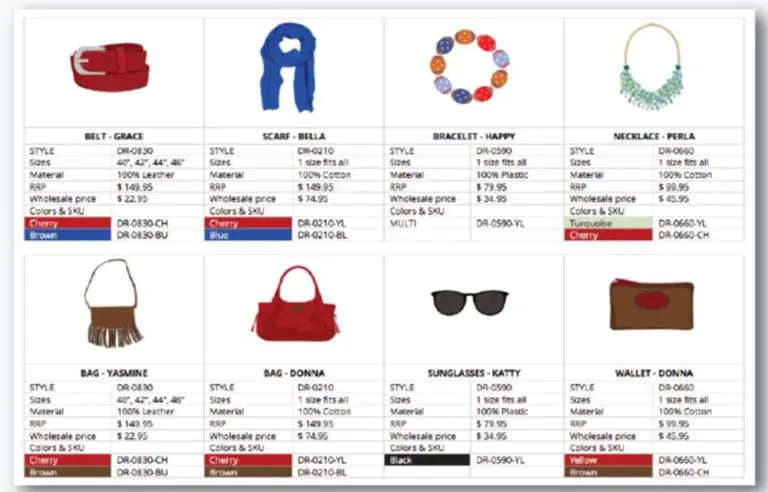How Much Can I Sell A Homemade Candle?
Homemade candles can be a lucrative business opportunity. With low start-up costs, the ability to sell online or wholesale, and high profit margins, homemade candles provide a flexible way to generate income. The homemade candle market also has built-in demand, with candles purchased by 80% of US households according to SmallBizTrends.com[1]. However, the competition is stiff, so an entrepreneur needs the right combination of quality, branding, and marketing to succeed. This guide provides an overview of costs, pricing, profits, and strategies to launch and grow a homemade candle business.
[1]“How to Start a Candle Business.” SmallBizTrends.com, 16 Jan. 2024, https://smallbiztrends.com/2024/01/how-to-start-a-candle-business.html.
Start-up Costs
Starting a homemade candle business has relatively low start-up costs compared to other small businesses. The main expenses will be supplies and equipment. According to Small Business Trends article, you can get started for under $1000. Some of the main start-up costs include:
Equipment: To make candles, you’ll need candle making supplies like wax, wicks, fragrance oils, dyes, jars/containers, and a double boiler or wax melter to melt the wax. Other helpful equipment includes thermometers, pouring pots, and labeling supplies. Expect to spend $300-500 on initial equipment and ingredient stock.
Ingredients: The main ingredients for candle making are wax, wicks, and fragrance oils. Paraffin is the most common and affordable wax option. Other options include soy, beeswax, and coconut wax. Fragrance oils provide scent and typically cost $2-5 per ounce. You’ll also need dye for colored candles. Expect to spend $100-300 on initial ingredient stock.
Packaging: Attractive packaging like jars, tins, or boxes are key for presentation. You can buy inexpensive bulk containers ranging from $0.50-5 each. Clear glass jars are popular for showcasing colors and designs. Expect to spend $100-300 on initial packaging supplies like jars, lids, boxes, bands, and labels.
Pricing Considerations
When pricing your homemade candles, it’s important to do thorough market research first. Look at the prices of similar candles in your local market and online to get a sense of competitive pricing (https://www.4menearme.com/tools/candle-price-calculator/). Consider the size, materials, scent, and other factors that impact pricing. For example, soy or beeswax candles often command a higher price than paraffin.
You’ll also want to take into account different pricing strategies. Cost-based pricing looks at your material and labor costs and adds a markup. Value-based pricing considers what customers perceive the value to be and prices accordingly. Competition-based pricing aligns closely with competitors’ prices. Price skimming involves setting a high initial price and then lowering it as the market grows more competitive. Finding the right strategy for your business and target market is key.
Avoid setting your prices too low. Price wars can devalue your brand. Aim for a healthy profit margin so you can sustainably grow your business.
Setting Your Price
When setting a price for your homemade candles, there are several factors to consider. The traditional pricing formula is to charge two to four times your cost for the materials and labor (https://www.candlescience.com/how-to-price-your-candles/). This allows you to cover your costs and make a reasonable profit on each candle. Another common formula is to take your material cost per candle and multiply it by 3-4 if selling directly to customers (https://villagecraftandcandle.com/blogs/news/how-to-price-your-candles).
Typical pricing for an 8 oz candle ranges from $10 on the low end to $25 on the high end. Soy candles tend to be at the lower end around $10-15, while beeswax and other premium candles sell for $20-25. The perceived value of your candle, packaging, brand, and any customization will factor into the price. Handmade, artisanal candles can demand a higher price point than mass-produced candles.
Consider your target customer and what prices seem fair and reasonable to them. Finding the sweet spot between covering your costs and making a profit while not overpricing is key. Experiment with different price points and see what sells best.
Low vs High Pricing
When pricing your homemade candles, you’ll need to decide whether you want to position them as a low-cost or premium product. Both approaches have their pros and cons.
Low pricing can help you attract budget-conscious shoppers and sell higher volumes. However, your profit margins will be slimmer. You’ll also need to keep a close eye on your costs to maintain profitability as your materials and labor remain the same (cite: https://www.huffpost.com/entry/difference-cheap-expensive-candles_l_6372728ce4b09d758bda31e2).
High pricing allows you to earn a better profit on each candle sold. This pricing can convey a sense of luxury and quality. However, you may struggle to attract as many buyers, especially when competing against mass-produced discount candles. High pricing only works if your candles truly stand out for their scent, burn time, packaging, etc (cite: https://www.hotelcollection.com/blogs/news/high-quality-vs-low-quality-candles).
Consider your target customer, brand positioning, production costs, and competitors when deciding on pricing. It’s ideal to maximize profit margins without deterring buyers.
Pricing by Candle Type
The prices for homemade candles can vary greatly depending on the candle’s size, shape, and scents. According to sources from Village Craft and Candle and Candle Science, some general pricing guidelines for different candle types are:
By size:
– Smaller candles (4 oz – 6 oz) – $5 – $10
– Standard candles (8 oz – 12 oz) – $10 – $18
– Large candles (14 oz – 22 oz) – $15 – $25
– Extra large candles (24 oz+) – $25+
By shape:
– Pillar candles – Lower end of price range
– Container candles – Middle of price range
– Votive candles – Higher end of price range
By scent:
– Unscented candles – Lower end of price range
– Lightly scented candles – Middle of price range
– Strongly scented candles – Higher end of price range
The more complex the design, unique container, or special scents, the higher you can price your candles. Testing different pricing tiers for each candle type will help find the optimal price.
Profit Margins
Profit margins for homemade candle businesses can vary widely based on factors like ingredients, packaging, marketing, and sales volumes. However, typical profit margins for a small homemade candle business fall in the range of 30-50% (Source). This means if a candle is sold for $20, the profit margin would be $6-10.
When just starting out, it’s important to balance your costs carefully to ensure you can make a decent profit on each candle sold. Key costs to factor in include ingredients like wax, fragrance oils, wicks and packaging. As you scale up production, you may be able to negotiate lower prices on bulk ingredient purchases. Packaging and branding is another area where costs can add up quickly, so look for ways to create an appealing product while keeping these expenses manageable. Targeting a profit margin of around 40% for your early candles will allow sufficient room to account for all costs of goods sold.

With experience, you may be able to increase profit margins, especially for premium or luxury candle lines. Unique scents, branding and packaging can enable pricing at a level to yield margins of 60% or higher. However, when first starting out, sticking close to the 30-50% profit margin range helps ensure your homemade candle business remains viable while you establish your brand and customer base.
Marketing
Marketing is crucial for selling homemade candles at a good profit margin. Some effective marketing strategies include:
Leverage social media by creating accounts on platforms like Instagram and Pinterest to showcase product images and promote your brand (for tips see How to Market a Candle Business [+ tools and resources]).
Host candle parties and offer discounts to introduce potential customers to your products and generate sales (for more see Marketing Strategy For A Candle Business). Having a booth at craft fairs, farmer’s markets, and holiday bazaars is another great way to directly sell to customers.
Build an email list to send out promotions, new product announcements, and discounts to drive repeat business.
Leverage search engine optimization and content marketing by creating a website/blog with tips, recipes, DIY projects to attract organic traffic.
Partner with local gift shops, boutiques, and specialty stores to sell on consignment and reach new customers.
Scaling Your Business
As your candle business grows, you’ll likely need to scale up production to meet increasing demand. This presents opportunities for growth but also challenges in managing a larger operation.
To increase production capacity, you may need larger equipment and more workspace. Consider upgrading to an industrial melter, filling equipment, and labeling machines to improve efficiency. Renting a commercial kitchen or production facility provides more space as you scale up batches. You may also need to streamline your packaging and fulfillment process (source).
When ramping up production volume, be careful not to sacrifice quality control. Continue hand-pouring and hand-wicking techniques for consistency. Perform regular burn tests on poured candles before listing them for sale. As you scale, create documented processes and train staff to maintain quality standards (source).
At higher volumes, ingredient costs become more significant. Look for bulk discounts from suppliers as you order larger quantities of wax, fragrance oils, wicks, and jars. Price shopping and cost analysis will help maximize profit margins. Inventory management also becomes more crucial to avoid tying up capital in excess materials.
Scaling a business brings both opportunities and challenges. With careful planning and process improvements, candle makers can grow their brand and increase production successfully. The key is focusing on quality while leveraging quantity discounts and streamlined operations.
Conclusion
In summary, determining the optimal price for your homemade candles requires careful consideration of all the costs involved in producing them as well as your target market and profit goals. The standard guideline is to price your candles at 2-3 times your material costs, but you may need to adjust up or down based on factors like labor, packaging, shipping, and market demand.
Here are some final tips for pricing your candles profitably:
- Calculate your exact material costs per candle including wax, fragrance, wicks, jars, and packaging.
- Factor in additional costs like labor, shipping, marketing, and business expenses.
- Research competitor pricing but don’t just match it – find your niche.
- Consider your brand, ingredients, and production quality when setting your price.
- Aim for a 30-50% profit margin per candle.
- Adjust pricing up for more complex designs and down for high volume orders.
- Reevaluate pricing regularly as your business grows.
By taking a strategic approach to pricing and testing different price points, you can find the sweet spot that maximizes both profitability and sales volume for your homemade candle business.





